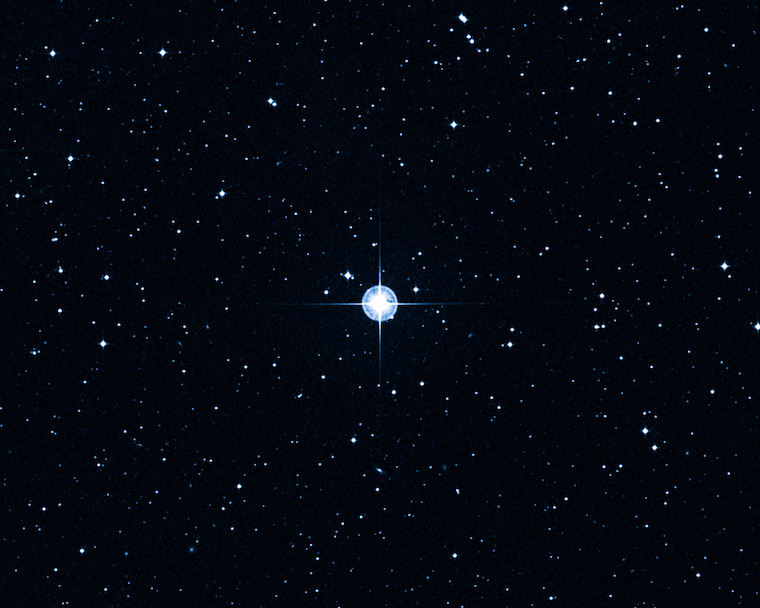Methuselah Star

HD 140283 or as it is popularly known, Methuselah Star, is a metal-poor subgiant star just 202.4 light years from earth. Metal, in astronomical terms, is any element later in the periodic table than than hydrogen and helium. The early universe, before any stars were born, was composed of 92% hydrogen and 8% helium.1 Hence, the earliest generation of stars had almost zero metallicity - there was a little sprinkling of lithium and beryllium in the early universe, but that was negligible. This generation is, a bit confusingly, called the Population III stars. As these stars died and spread the heavier elements they fused into the interstellar medium, it created the forming matter for the next generation of stars, called Population II, which had higher metallicity than the Population III stars. These would then die and pollute the interstellar material with even more metals and create the conditions to bring forth the next generation of stars, the Population I stars, like our sun2, which are considered relatively metal-rich. Of course, this is a very simplified view of the generations. In reality, there are a lot of intermixing between generations, and many stars are considered intermediate as opposed to perfect representative of the generations.
Our Methuselah star is a metal-poor star, considered to be a member of the Population II stars. Initial estimates of its age in 2013 was 14.46 ± 0.8 billion years3, which is earlier than our most accurate estimate of the age of the universe at 13.761 ± 0.038 billion years4. This is when the star was sensationalised in the popular media as the star older than the universe, disproving the Big Bang Theory and was given the moniker of Methuselah Star. Unfortunately, more recent studies have put a dampner on the science-defying sensationalism, with more accurate age estimates of 13.7 billion years in 20155, and even 12 billion years more recently in 20216. Even the initial age estimate was within the age of the universe when considering the uncertainies around the estimate.
Another interesting fact about the star is that it is blueshifted, meaning light waves coming from it to us is compressed, meaning it is moving towards us. The star was known for about a century as a fast moving star, and analysis of its trajectory suggests that it is only a temporary visitor to our neighbourhood of the galaxy, and it belongs to the population of stars in the galactic bulge of the Milky Way which contains the first and the oldest stars to have formed in our galaxy. Considering the low metallicity of the star, it makes perfect sense.
Further Reading
- Why the “Methuselah Star” does not disprove the Big Bang - Big Think
- Methuselah: The oldest star in the universe - Space.com
- Hubble finds birth certificate of oldest known star - Phys.org
- Methuselah’s Star is not older than the Universe after all. But it’s still pretty frakking old - Syfy.com
Footnotes
-
When the lights first turned on in the universe - Astronomy.com ↩︎
-
The sun is considered to be an intermediate Population I star, metal-poorer than something like μ Arae/HD 160691 which is considered to be a proper representative for the generation ↩︎
-
Hubble finds birth certificate of oldest known star - Phys.org ↩︎
-
Planck Collaboration (2020). “Planck 2018 results. VI. Cosmological parameters (See PDF, page 15, Table 2)”. Astronomy & Astrophysics. [link] ↩︎
-
Creevey, O. L.; Thévenin, F.; Berio, P.; Heiter, U.; von Braun, K.; Mourard, D.; Bigot, L.; Boyajian, T.S.; Kervella, P.; Morel, P.; Pichon, B.; Chiavassa, A.; Nardetto, N.; Perraut, K.; Meilland, A.; Mc Alister, H. A.; Ten Brummelaar, T.A.; Farrington, C.; Sturmann, J.; Sturmann, L.; Turner, N. (2015). “Benchmark stars for Gaia Fundamental properties of the Population II star HD 140283 from interferometric, spectroscopic, and photometric data”. Astronomy and Astrophysics. [link] ↩︎
-
Jiangling Tang; Meredith Joyce (2021). “Revised Best Estimates for the Age and Mass of the Methuselah Star HD 140283 Using MESA and Interferometry and Implications for 1D Convection”. Research Notes of the AAS. [link] ↩︎